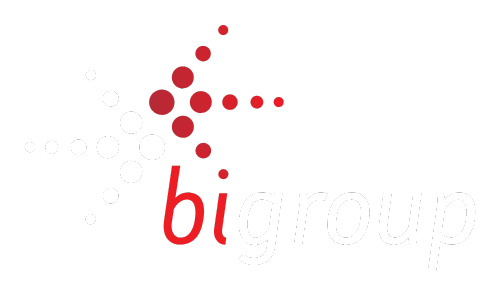ESG reporting has become a critical pillar for organisations committed to sustainability and transparency. However, many businesses struggle with fragmented ESG data, inconsistent reporting structures, and the challenge of meeting evolving regulatory requirements. Unilever, a global leader in consumer goods, faced similar issues but successfully transformed its ESG reporting by implementing a centralised, data-driven strategy.
This article follows a structured approach to analysing Unilever’s journey using six key perspectives: a real-life case study, a problem-solution narrative, future trends, an executive perspective, myth-busting, and a technical deep dive. By exploring these dimensions, organisations can gain a holistic understanding of ESG data management best practices.
A Real-Life Case Study: Unilever’s ESG Data Challenge
As a multinational corporation with operations in over 190 countries, Unilever faced significant ESG data management issues:
- Disparate Data Sources – ESG data was spread across multiple departments, regions, and supply chains, making consolidation difficult.
- Inconsistent Metrics – Different teams used varying methodologies to measure sustainability metrics, leading to reporting inconsistencies.
- Regulatory Compliance Risks – Unilever needed to comply with multiple ESG reporting frameworks, including the Global Reporting Initiative (GRI) and the Task Force on Climate-Related Financial Disclosures (TCFD).
- Stakeholder Expectations – Investors, customers, and employees demanded greater transparency and real-time insights into Unilever’s sustainability performance.
A Problem-Solution Narrative: The Data-Driven Transformation
To address these challenges, Unilever took a structured approach to ESG data integration and governance. Below are the key steps the company implemented:
Establishing a Centralised ESG Data Platform
Unilever invested in a cloud-based ESG data management system that aggregated sustainability metrics from multiple business units into a single repository. This system enabled real-time data tracking and analytics, allowing stakeholders to access reliable sustainability insights.
Standardising ESG Metrics and Reporting
Unilever adopted the Science-Based Targets initiative (SBTi) and aligned its ESG reporting with internationally recognised standards. By using common frameworks, the company ensured consistency across all disclosures.
Leveraging AI and Automation
To improve data accuracy and efficiency, Unilever implemented AI-driven tools that automated ESG data collection, validation, and reporting. Machine learning algorithms identified anomalies and ensured data quality before submission to regulatory bodies.
Future Trends & Predictions: The Role of AI and Blockchain in ESG Reporting
Unilever’s use of advanced technologies in ESG reporting provides insights into future industry trends. Emerging innovations are set to revolutionise ESG reporting in the following ways:
- AI for Predictive Analytics – AI-powered systems will enable companies to forecast sustainability risks and take preventive action.
- Blockchain for Data Integrity – Secure and tamper-proof ESG records will become the norm for auditability.
- Real-Time ESG Dashboards – Advanced cloud-based analytics will provide real-time insights, reducing manual reporting efforts.
- Automated Compliance Tracking – AI-driven tools will ensure adherence to evolving regulatory frameworks without manual intervention.
Executive Perspective: Why ESG Data is a Competitive Advantage
For executives, ESG reporting is more than just regulatory compliance; it is a strategic asset. Unilever’s investment in ESG data has yielded business benefits, including:
- Enhanced Investor Confidence – Reliable ESG data strengthens investor trust and improves access to sustainable finance.
- Operational Efficiency – Streamlined data collection and reporting reduce administrative burdens.
- Risk Mitigation – Proactive ESG risk management helps anticipate regulatory changes and prevent reputational damage.
- Competitive Differentiation – ESG-conscious consumers are more likely to choose brands with strong sustainability credentials.
Five ESG Data Myths That Are Costing Your Organisation Millions
Many organisations hesitate to invest in ESG data transformation due to prevailing myths. Unilever’s journey dispels some of these common misconceptions:
- Myth 1: ESG reporting is only for large enterprises.
- Reality: Even SMEs benefit from structured ESG reporting by attracting investors and partners aligned with sustainability values.
- Myth 2: ESG data does not affect financial performance.
- Reality: Companies with strong ESG frameworks have outperformed competitors in long-term revenue growth and risk management.
- Myth 3: ESG reporting is just a compliance exercise.
- Reality: ESG data enables organisations to enhance operational efficiencies and create value beyond compliance obligations.
- Myth 4: ESG data collection is too complex and resource-intensive.
- Reality: With AI and automation, companies can efficiently track and report ESG metrics without excessive manual work.
- Myth 5: ESG reporting does not drive real-world impact.
- Reality: Businesses with robust ESG data strategies have successfully reduced emissions, improved resource efficiency, and strengthened brand loyalty.
Technical Deep Dive: How to Build a Scalable ESG Data Infrastructure
Unilever’s ESG data transformation offers a blueprint for organisations aiming to enhance sustainability reporting. By adopting a comprehensive ESG data strategy that integrates technology, governance, and real-time analytics, businesses can position themselves as ESG leaders in an increasingly regulated and sustainability-driven world.
Unilever’s transformation was built on a robust technical foundation. Organisations aiming to replicate their success should focus on:
Data Governance Frameworks
- Define clear ESG data ownership and responsibility within the organisation.
- Standardise data formats and ensure quality control measures are in place.
Cloud-Based ESG Platforms
- Adopt scalable, cloud-based ESG platforms that allow integration with existing enterprise systems.
- Use automated workflows for data collection, validation, and reporting.
AI-Driven Analytics
- Leverage AI to identify patterns, detect anomalies, and provide predictive insights for sustainability performance.
- Implement machine learning models to optimise resource usage and carbon footprint reductions.
Real-Time ESG Monitoring
- Implement real-time dashboards that provide continuous visibility into ESG performance.
- Enable automated alerts for sustainability risks, ensuring proactive mitigation strategies.
For organisations looking to strengthen their ESG reporting capabilities, taking a diversified, data-first approach is the key to long-term success.
Take the Next Step in ESG Data Transformation
Building a robust ESG data strategy is a journey that requires the right tools, governance, and expertise. If your organisation is looking to enhance its ESG reporting, improve compliance, or leverage AI for sustainability, we can help.
Get in touch today to explore customised ESG data solutions that align with your business goals and regulatory requirements.
References and Sources
The information in this article has been compiled from publicly available sources, including Unilever’s sustainability reports, industry insights, and regulatory frameworks such as GRI and TCFD. For further reading, organisations can refer to Unilever’s official ESG disclosures and leading ESG research publications.

